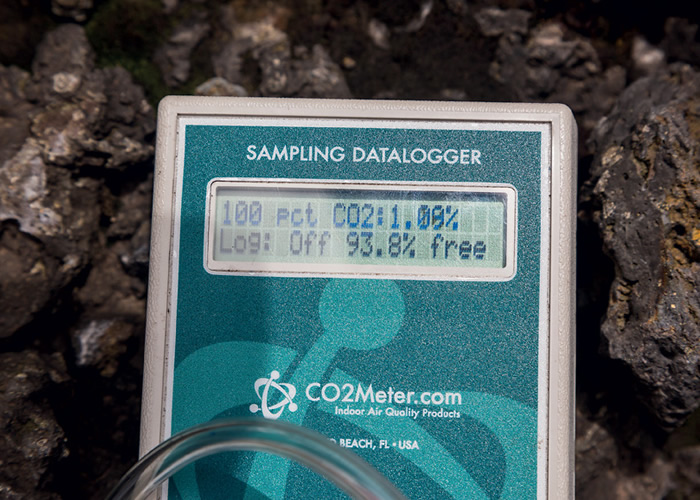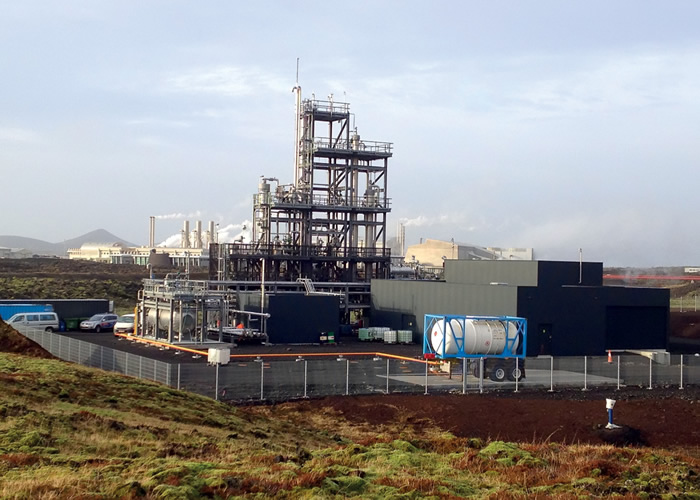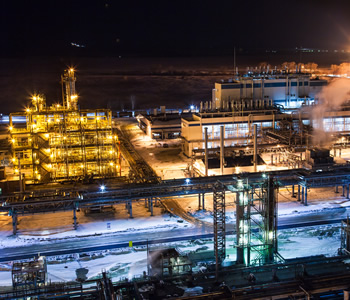Can CO2 be useful at all?
CO2 is an industrial by-product. If we could put it to good use, this would not only have a material environmental impact, but also generate significant profits, as the current CO2 market price is close to zero.
The petrochemical industry has several methods to recycle CO2. First, there is the carbon dioxide conversion, which produces a special synthesis gas from methane and CO2 as a universal building block for a lot of useful molecules. For example, SIBUR leverages synthesis gas to produce butyl alcohols, which are further used to manufacture paints and varnishes, synthesise organic compounds and produce all sorts of reagents. Dimethyl ether (DME) is another promising product made from synthesis gas. It is widely used by households in South Korea as a substitute for the propane-butane gas mixture. DME can replace the traditional diesel fuel, but this would require an upgrade of automotive fuel systems, as DME is a rather aggressive environment for rubber sealings. On the upside, the chemical formula of DME contains oxygen, which enables the fuel inside the engine to burn more completely.
CO2 measuring device.
According to the experts of the World Economic Forum, severe weather phenomena are a major threat to humankind. We have already started to feel the pinch of climate change, as ice melting caused by global warming in 1995–2005 prompted sea levels to increase by 4 cm. If polar ice keeps melting at the same speed, the flooding of many coastline territories would become inevitable.
Another promising СО2 recycling method is conversion into methyl alcohol, or methanol, a substance used to synthesise methyl tertiary butyl ether and manufacture many other products, for example, formaldehyde and acetic acid. This is a high-octane motor fuel additive mass-produced by SIBUR at its Tobolsk, Perm and Togliatti sites. Tobolsk is one of the potential platforms to convert CO2 into methanol, as the local central heating plant can provide sufficient volumes of carbon dioxide. Another promising site is our industrial cluster in Nizhny Novgorod, which produces ethylene oxide, with large amounts of nearly pure CO2 emitted as a by-product. It could be captured and used for conversion into methanol. However, a lot of hydrogen is needed to convert CO2 into methanol. Hydrogen is a fairly expensive type of feedstock, which apparently prevents the conversion technology from gaining widespread popularity.
A group of unique CO2 recycling technologies do not break up the CO2 molecules. Instead, they keep them intact to be used as a component for polymers known as polycarbonates (a popular construction material, to name just one application area – Ed.). Demand for such polymers is only starting to show in the market, but everything can change in the future.
What are the prospects of CO2 being put to use in other industries? Are there any application areas other than the petrochemical industry?
The food industry currently offers ample opportunities for CO2 consumption because, apart from freezing and beverage carbonation technologies, CO2 can be leveraged to create a modified environment for food products to considerably extend their shelf life. On top of that, carbon dioxide is widely used in grain elevators to fend off rodents and insects. Finally, CO2 is useful in enhancing the flow rate of wells in the oil industry. Hence, it would be reasonable to build CO2-emitting facilities in close proximity to oil development projects.
What precludes a wider spread of CO2 disposal solutions?
Carbon dioxide is a local product, which is very hard to transport. It can only be transported in a liquefied state (which requires high pressure and low temperatures) or in the form of dry ice prone to quick evaporation. It is therefore optimal to consume carbon dioxide close to the emission source, as the effective shipment distance can barely exceed 300–500 km. If you consider the size of Russia, that is not much.
Iceland’s CRI has introduced a technology that can efficiently convert CO2 into methanol.
What impact could the development of СО₂ recycling technologies have in Russia?
The impact of the CO2 recycling technologies being implemented at production facilities would primarily depend on the scale of government support. For example, if the government provides long-term subsidies for CO2 recycling, such technologies have a real chance of becoming profitable, with producers getting an opportunity and, most significantly, an incentive to reduce their CO2 footprint and contribute to general environmental improvements in Russia.
Are you developing the solutions for using CO2 in the petrochemical industry independently or in partnership with other companies?
We are talking about large-scale projects here, so we have to closely monitor achievements of other companies dealing with the same issues. For example, Iceland's CRI offered an ingenious solution helping to efficiently convert CO2 into methanol.
Dimethyl ether (DME), a by-product of CO2 utilisation, is used in South Korea as, among other usages, an alternative to motor fuel.
Are there many similar technologies globally?
The food industry currently offers ample opportunities for CO2 consumption because, apart from freezing and beverage carbonation technologies, CO2 can be leveraged to create a modified environment for food products to considerably extend their shelf life. On top of that, carbon dioxide is widely used in grain elevators to fend off rodents and insects.
Not yet. The most efficient one is conversion into methanol, and it has not moved beyond the marketing stage so far. This technology is being piloted at a plant with a very low capacity, so it is too early to give assurances of its efficiency in large-scale projects.
The USA and some European countries are also busy developing a technology to convert CO2 into more valuable substances (such as ethanol) using biochemical tools. Genetic engineering today makes it possible to create living organisms (bacteria or algae) capable of synthesising substances that previously could only be obtained through a traditional production process. There are some challenges, though. The use of biochemical methods on an industrial scale requires impressive floor spaces (significant acreage), good lighting conditions and year-round warm temperatures, which translates into material capital expenditures for the producers. Hence, the launch of such projects still poses major problems.
How are things currently going with СО₂ emissions in Russia? What industries lead the charge in terms of air pollution?
Considerable emissions are typical of the metals and mining industry, as they use carbon additives to recover all sorts of oxides. Coal-fired power plants come in second, generally exerting a greater environmental impact than gas-fired plants. You see, burning methane with СО₂ produces water, and its content is twice as high as that of carbon dioxide, while coal-fired power plants burn pure carbon only. This is the main reason why the metals and mining industry, as well as coal producers, is actively searching for technologies that would help convert CO2 into products potentially popular in the market. As far as I know, they also consider producing methanol. Finally, cement plants also emit considerable volumes of CO2 (one tonne of carbon dioxide per tonne of output). By contrast, the chemical industry (including the petrochemical industry) produces much lower volumes of CO2 than any of the above. This is due to the fact that production processes at chemical plants are usually closely intertwined. For example, thermal power required for pyrolysis is emitted by its by-products. In other words, chemical companies convert the acquired feedstock into value-added products, with most of by-products used for manufacturing purposes even today.
Download PDF









Andrey Grachev
Senior Manager at SIBUR's New Products and Technologies Development